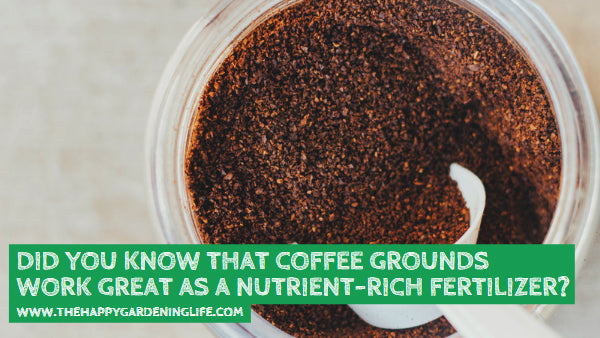
Did You Know That Coffee Grounds Work Great as a Nutrient-Rich Fertilizer? Find Out More Here!
Share
 Plants require lots of nutrients for daily survival, and choosing a good organic fertilizer can help provide for their needs. Now, if you’re looking for an organic fertilizer that’s cheap and easy to use, then you should definitely try coffee grounds!
Plants require lots of nutrients for daily survival, and choosing a good organic fertilizer can help provide for their needs. Now, if you’re looking for an organic fertilizer that’s cheap and easy to use, then you should definitely try coffee grounds!
Coffee contains a lot of minerals—they’re naturally rich in nitrogen, phosphorus, and potassium. It also offers other nutrients such as magnesium, copper, calcium, zinc, manganese, and iron to help your plants grow much healthier. Coffee has all of these nutrients, that’s why adding them to your soil can make your plants and vegetables become much healthier. So if you want to achieve a nutrient-rich soil for your garden, then using coffee grounds is the absolute way to go!
To find out more about coffee grounds and how to use them to fertilize your garden, be sure to read this excellent in-depth guide by Backyard Boss. Please don’t forget to share this tip with your friends on Facebook, Twitter and Pinterest!
Coffee Grounds as Fertilizer
Using coffee grounds as fertilizer is a cheap and eco friendly way to give your garden soil a boost of nutrients. Now it might sound as if you need a PhD in soil management to create your own fertilizer – but this couldn’t be further from the truth. In fact, you can add them directly to your garden soil.
But how do you do this and what is the best way to add them as a fertilizer?
Firstly, you want to get a large bag of coffee grounds (from a Starbucks or coffee shop as mentioned above) and a bag of topsoil.
You can mix equal parts grounds and topsoil to create a potting mixture or, if you are adding to flower beds, you can just sprinkle it straight on top. Take a handful and spread them onto the top of your soil. Make sure you don’t layer it thicker than half an inch or the remains could fuse together and create a solid crust which prevents water getting through. Use a small fork or a rake to spread the coffee evenly in the garden soil and mix it in with the top layer of your flowerbed.
You can mix topsoil with the java remnants and then spread that in the same way. You could mix it in a large wheelbarrow and then walk it around your backyard, shovelling it out as you go.
If you are adding grounds directly, start with a small amount to test how individual plants react. Start by adding a level tablespoon of grounds once a week and then observe how your plants change or grow. Tweak the amount, or frequency you add them, to suit your plants.
While you may think the black material is too acidic for your garden soil, the brewing process actually removes the acidity but leaves all the nutrients and vitamins your plants will love. The grounds have nitrogen, phosphorous and potassium which are all easily absorbed by garden plants.
Leftover grounds can also be mixed with eggshells to create a perfect, rich fertilizer.
All plants crave nutrients so coffee grounds can be used with many different plants at different levels, further on we will go into which plants benefit from coffee grounds as fertilizer the most.
Visit Backyard Boss today to discover more uses for coffee grounds in the garden!
For further reading, check out these 11 Ways to Use Coffee Grounds in the Garden from TipsBulletin.com.
